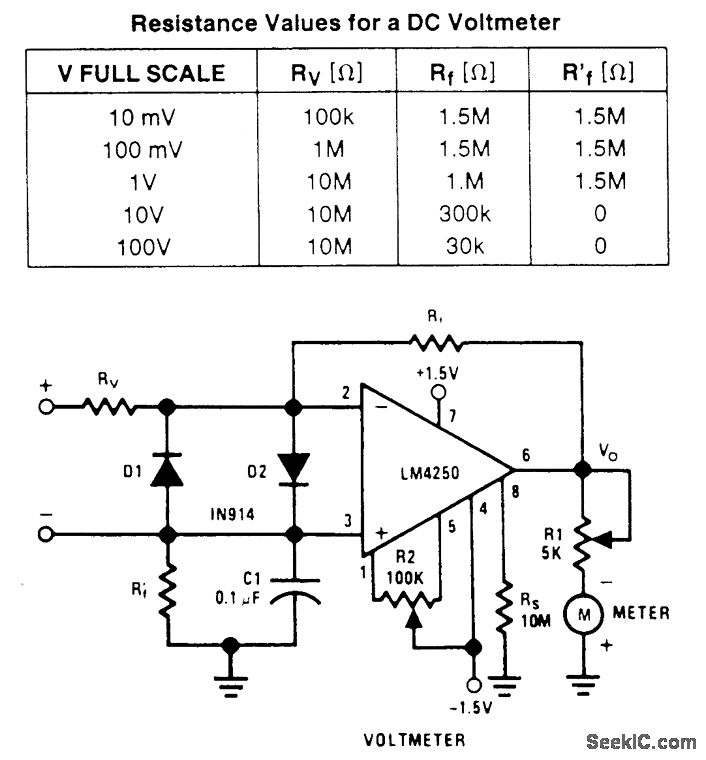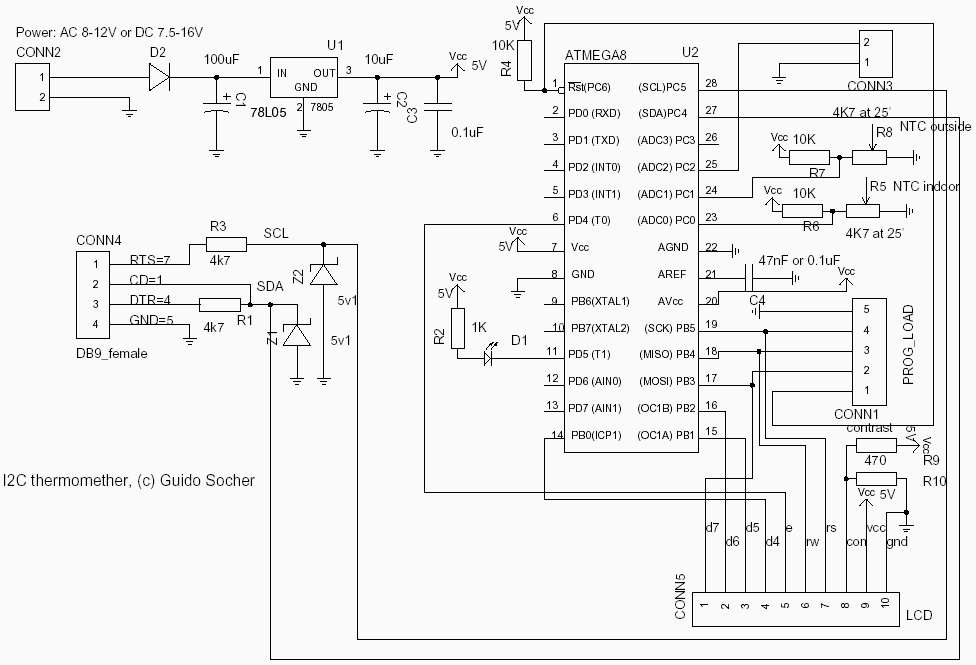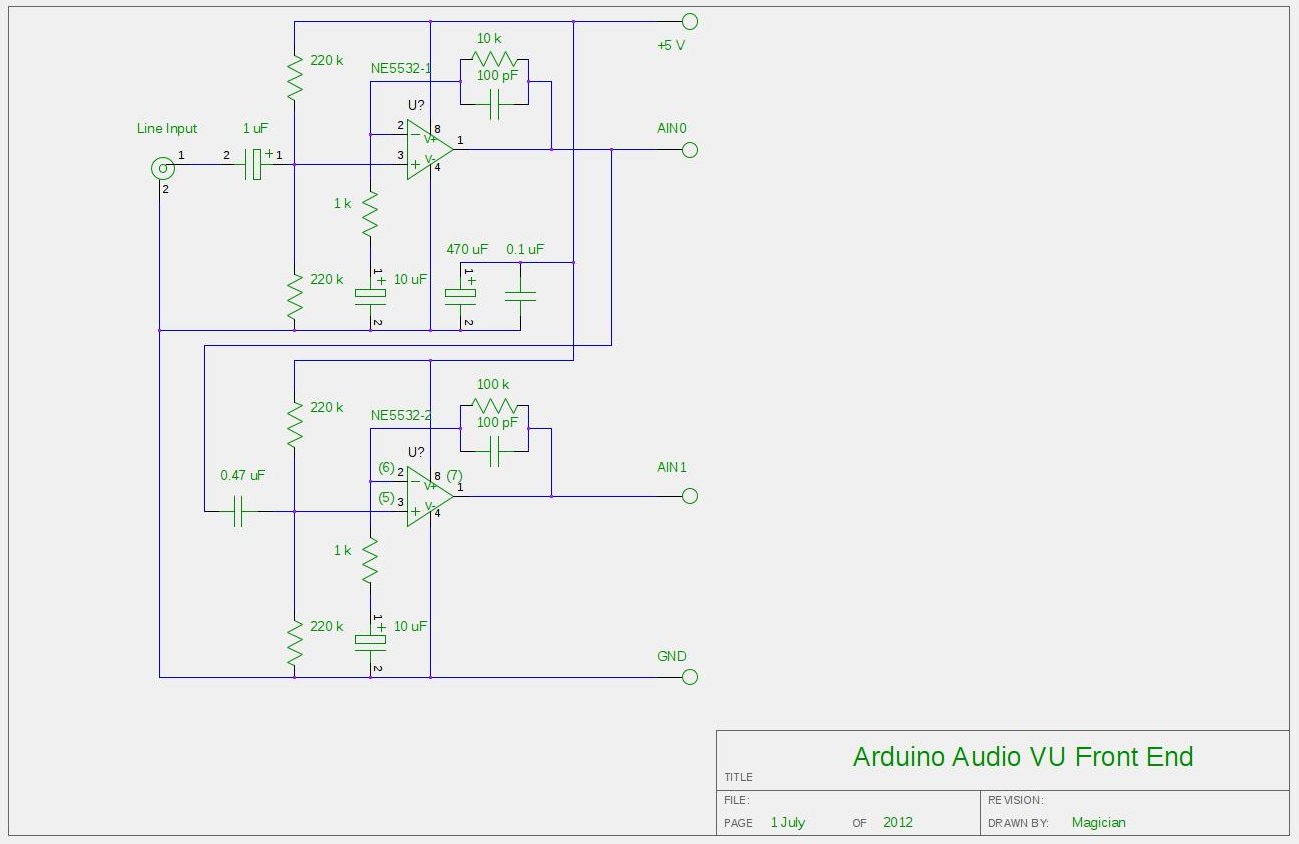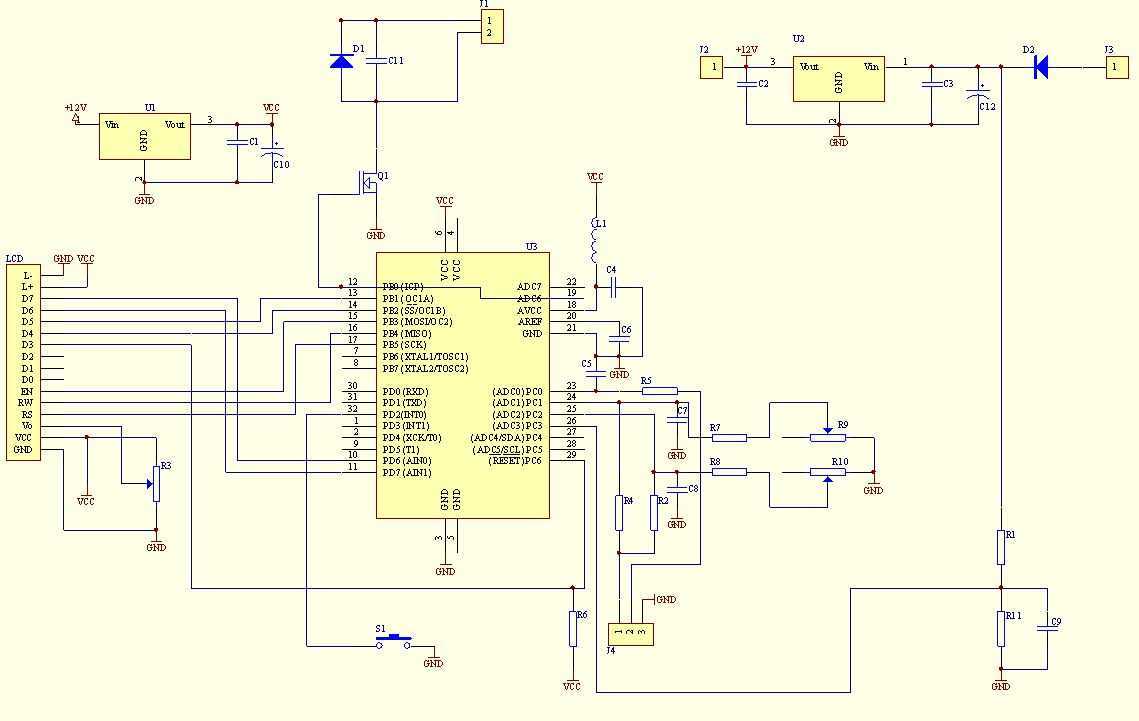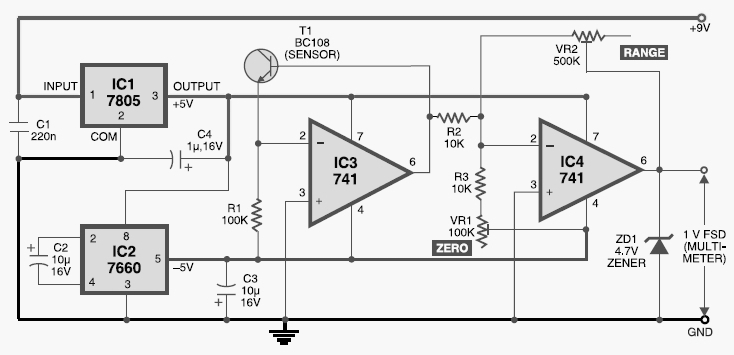
meter adaptor with symmetrical
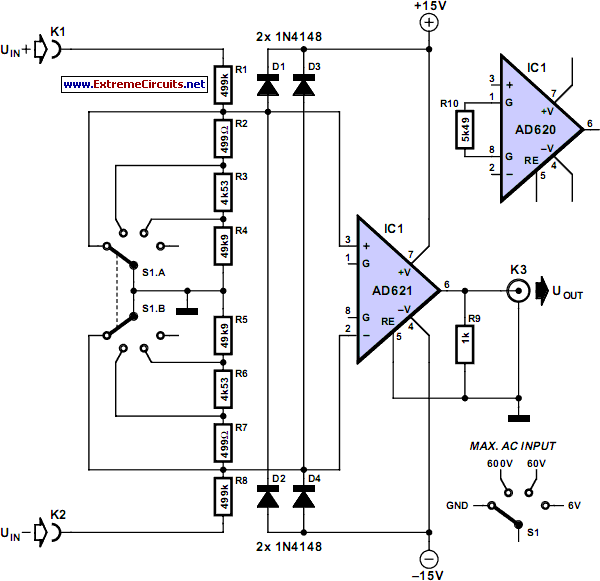
Unlike a standard voltmeter, the input of an oscilloscope typically has one side (GND) connected to ground through the mains lead. This connection can lead to significant issues when the measuring probe is attached to a circuit that is also grounded, potentially introducing a short circuit. The repercussions of such a short can be severe, particularly in high current or high voltage circuits, where the risk of danger is substantial. Fortunately, this issue can be addressed by making the oscilloscope's input float with respect to ground. The instrumentation amplifier depicted here achieves this while also functioning as an attenuator. The AD621 from Analog Devices amplifies the input by a factor of 10, and an input switch allows for the selection of three ranges. A GND position is included to calibrate the oscilloscope's zero setting. The maximum input voltage at any setting must not exceed 600 VAC. It is essential to ensure that resistors R1 and R8 can handle a working voltage of at least 600 V. Using two equal resistors in series is advisable, as 300 V types are more readily available. Additionally, all resistors should have a tolerance of 1% or better. The specifications for the AD621 indicate that with an amplification of 10, the common-mode rejection ratio (CMRR) is 110 dB, and the bandwidth is 800 kHz. If the AD621 is unavailable, the AD620 can be used as an alternative, although its bandwidth is limited to approximately 120 kHz. The circuit can be housed in a metal enclosure with a mains supply but is also effective when powered by two 9V batteries, with a current consumption of only a few milliamps. Increasing R9 to 10 k can further reduce power consumption.
The described circuit utilizes an instrumentation amplifier to isolate the oscilloscope input from ground potential, thereby preventing ground loops and potential short circuits that could arise when measuring live circuits. The AD621 amplifier is selected for its high CMRR and bandwidth, making it suitable for precise measurements in noisy environments. The inclusion of a switch to select between three different measurement ranges allows for flexibility in various applications, ensuring that the oscilloscope can handle a wide range of signal amplitudes while maintaining accuracy.
The design considerations for resistors R1 and R8 emphasize the importance of voltage ratings, particularly in high-voltage applications, where exceeding the rated voltage could lead to component failure and safety hazards. The recommendation to use two series resistors rated for 300 V each is a practical solution that balances availability and safety. Additionally, maintaining a 1% tolerance for the resistors ensures that the measurements remain accurate and reliable.
The choice of power supply, whether from mains or batteries, adds versatility to the circuit's deployment. Battery operation is particularly beneficial in field applications where mains power is not accessible. The low current consumption of the circuit enhances battery life, making it suitable for prolonged use in remote locations.
Overall, this circuit design effectively addresses the challenges associated with oscilloscope measurements in grounded circuits, providing a safe and reliable means of obtaining accurate electrical measurements in a variety of settings.In contrast to an ordinary voltmeter, the input of an oscilloscope generally has one side (GND) connected to ground via the mains lead. In certain situations this can be very problematic. When the measuring probe is connected to a circuit that is also connected to ground, there is a chance that a short is introduced in the circuit.
That the circui t, and hence the measurement, is affected by this is the least of your problems. If you were taking measurements from high current or high voltage (valve equipment) circuits, the out-come could be extremely dangerous! Fortunately it is not too difficult to get round this problem. All you have to do is make the input to the oscilloscope float with respect to ground. The instrumentation amplifier shown here does that, and functions as an attenuator as well. The AD621 from Analog Devices amplifies the input by a factor of 10, and a switch at the input gives a choice of 3 ranges.
A GND` position has also been included, to calibrate the zero setting of the oscilloscope. The maximum input voltage at any setting may never exceed 600 VAC. Make sure that R1 and R8 have a working voltage of at least 600 V. You could use two equal resistors connected in series for these, since 300 V types are more easily obtainable. You should also make sure that all resistors have a tolerance of 1% or better. Other specifications for the AD621 are: with an amplification of 10 times the CMRR is 110 dB and the bandwidth is 800 kHz.
If you can`t find the AD621 locally, the AD620 is a good alternative. However, the bandwidth is then limited to about 120 kHz. The circuit can be housed inside a metal case with a mains supply, but also works perfectly well when powered from two 9V batteries. The current consumption is only a few milliamps. You could also increase R9 to 10 k to reduce the power consumption a bit more. 🔗 External reference
The described circuit utilizes an instrumentation amplifier to isolate the oscilloscope input from ground potential, thereby preventing ground loops and potential short circuits that could arise when measuring live circuits. The AD621 amplifier is selected for its high CMRR and bandwidth, making it suitable for precise measurements in noisy environments. The inclusion of a switch to select between three different measurement ranges allows for flexibility in various applications, ensuring that the oscilloscope can handle a wide range of signal amplitudes while maintaining accuracy.
The design considerations for resistors R1 and R8 emphasize the importance of voltage ratings, particularly in high-voltage applications, where exceeding the rated voltage could lead to component failure and safety hazards. The recommendation to use two series resistors rated for 300 V each is a practical solution that balances availability and safety. Additionally, maintaining a 1% tolerance for the resistors ensures that the measurements remain accurate and reliable.
The choice of power supply, whether from mains or batteries, adds versatility to the circuit's deployment. Battery operation is particularly beneficial in field applications where mains power is not accessible. The low current consumption of the circuit enhances battery life, making it suitable for prolonged use in remote locations.
Overall, this circuit design effectively addresses the challenges associated with oscilloscope measurements in grounded circuits, providing a safe and reliable means of obtaining accurate electrical measurements in a variety of settings.In contrast to an ordinary voltmeter, the input of an oscilloscope generally has one side (GND) connected to ground via the mains lead. In certain situations this can be very problematic. When the measuring probe is connected to a circuit that is also connected to ground, there is a chance that a short is introduced in the circuit.
That the circui t, and hence the measurement, is affected by this is the least of your problems. If you were taking measurements from high current or high voltage (valve equipment) circuits, the out-come could be extremely dangerous! Fortunately it is not too difficult to get round this problem. All you have to do is make the input to the oscilloscope float with respect to ground. The instrumentation amplifier shown here does that, and functions as an attenuator as well. The AD621 from Analog Devices amplifies the input by a factor of 10, and a switch at the input gives a choice of 3 ranges.
A GND` position has also been included, to calibrate the zero setting of the oscilloscope. The maximum input voltage at any setting may never exceed 600 VAC. Make sure that R1 and R8 have a working voltage of at least 600 V. You could use two equal resistors connected in series for these, since 300 V types are more easily obtainable. You should also make sure that all resistors have a tolerance of 1% or better. Other specifications for the AD621 are: with an amplification of 10 times the CMRR is 110 dB and the bandwidth is 800 kHz.
If you can`t find the AD621 locally, the AD620 is a good alternative. However, the bandwidth is then limited to about 120 kHz. The circuit can be housed inside a metal case with a mains supply, but also works perfectly well when powered from two 9V batteries. The current consumption is only a few milliamps. You could also increase R9 to 10 k to reduce the power consumption a bit more. 🔗 External reference
